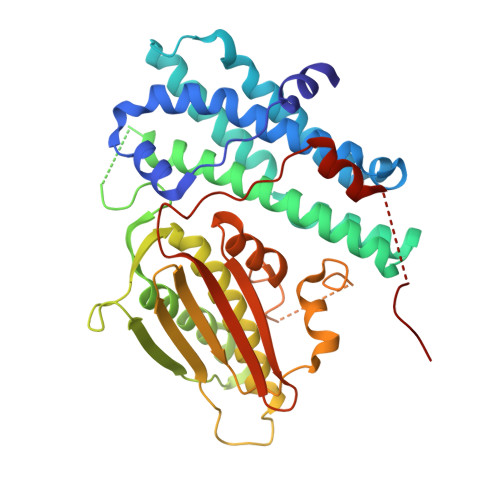Discovery of ATP competitive PDHK1/2 dual inhibitors.
Xu, H., Ding, D., Han, X., Miao, K., Liang, C., Yun, H., Zhu, W., Dey, F., Zhao, D., Wu, Y., Reutlinger, M., Yang, J., Zhai, G., Lin, Z., Li, C., Wu, W., Xu, B., Han, L., Chen, S., Huang, X., Casagrande, F., Hilbert, M., Strebel, Q., Wichert, M., Westwood, P., Schafer, R., Roth, D., Heer, D., Tian, X., Ma, T., Zhang, T., Zhao, J., Urich, E., Xia, G., Lassen, K., Shen, H.C., Zou, G.(2025) Bioorg Med Chem Lett 122: 130190-130190
- PubMed: 40107630
- DOI: https://doi.org/10.1016/j.bmcl.2025.130190
- Primary Citation of Related Structures:
9M3O, 9M3P, 9M3R, 9M3T, 9M3U - PubMed Abstract:
Multiple screening approaches were carried out to identify novel chemistry starting for Pyruvate Dehydrogenase Kinases (PDHKs) inhibitors. Through hit triaging efforts and structure-based optimization, two series of ATP competitive inhibitors with single digit nanomolar enzymatic potency for PDHK1/2 and around 10-100-fold selectivity over PDHK4/3 were discovered. Approach of covalent inhibitor was explored to successfully improve the cellular target engagement to single digit micromolar range.
- China Innovation Center of Roche, No. 371 Lishizhen Road, Shanghai, 201203, China.
Organizational Affiliation:





















